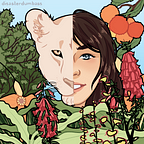Beyond Science
Herbalist Primer: A Review
A great tool for roleplaying, inspired by science and real-world folklore.
What is the Herbalist Primer?
The Herbalist’s Primer was the very successful Kickstarter of Double Proficiency. As described in the project, the book aimed to be “an illustrated guide to real-world magical plants for magicians, worldbuilders, alchemists, and game masters.”
The book offers information on a wide array of herbalism terms (illustrations included!), a whopping 100 plants and their uses (with illustrations too, of course!), and a variety of additions like harvesting tips, recipes, and plant generation tables. In fact, one of the book’s aims was to ensure the book met the “high standards of popular science”.
I am excited to get the chance to review the Herbalist primer as a roleplayer and a biologist. Therefore, I will focus my review on those two fronts specifically: science & roleplay potential.
Some initial shock
One of the first things that struck me while reading the Herbalist Primer was the very advanced botanical terminology. Concepts like photosynthesis, permaculture, and asexual reproduction are not concepts I was expecting to read in the book. While those concepts may sit quite well in a game like Magical Society Revolution, I do not think they fit well with many D&D settings.
However, the herbalist’s primer is not designed for D&D or similar games, rather it is meant to be a companion for any ttrpg, and it was written to be system agnostic. Given the wide variety of systems and settings in tabletop roleplaying games, the inclusion of something like hypodermic injections is no more out of place than the inclusion of potions of flying.
Whilst I may have not expected some of the botanical terms, I was in love with all of the illustrations. The pictures of the different types of roots, leaves, fruits… These will be incredibly useful for GMs trying to describe the vegetation of an area or what the leaves of a “plant monster” look like.
How correct is the science?
By large, and considering the fact that the book mixes science with folklore and the fantastic, the book is a pretty good introduction to herbalism.
The book’s conversational tone makes the task of assessing how accurate the book is a bit difficult. For example, of Helleborus niger, the author says the following:
Reported cases of hellebore curing’ madness’ are vague and inconsistent enough to be considered erroneous.
But in reality, reports of hellebore curing’ madness’ were relatively common in the past. Of course, whether the plant actually “cures madness” is another matter.
I did find some odd details & interesting choices. For example, I saw a couple of plants labelled as tropical that made me raise an eyebrow. Or the definition of symbiont, which was antiquated, based on the concept that a symbiont is beneficial for both parties.
However, given the book aims of a “popular science book”, simplifications like these are expected. Nevertheless, the book avoids too much over-simplification while keeping the content entertaining.
The book is heavily inspired by science, though. Even in the sections of magical herbalism, the scientific mindset is there:
The differences between a medicine and a poison lies often in the dose.
There is even a reference section (page 306 onwards) in case readers want to chase down the details of a specific plant. The section is great for anyone whose curiosity has been peeked by the information they read about in the plant sections. The references cover each plant providing the basic summary and history about the plant in our world.
Considering all these factors, I’d say the book is accurate in the majority of its portrayal of plants and their use. Of course, a herbalist may notice an edge case or odd mention here and there, but seeing how they won’t be using the book as a field guide to real-world herbalism & medicine (there are many disclaimers about this!), this shouldn’t be an issue.
An excellent guide to nature-inspired roleplayers and worldbuilders
The book is ripe with roleplaying inspirations. Just lay back, open the book on a random page, and you are bound to find out juicy details for your next roleplaying session.
Below you can find my favourite sections (outside of specific plant details) for roleplaying inspiration.
- Types of plant material used in herbalism (page 26)
This section will expand your table’s plant use from seeds, roots, and leaves, to the whole plant. Get ready for your ranger brewing a remedy from galls, resin, and pollen!
- Harvesting (page 27, plus species-specific details)
There is a lot of potential flavour here or careful consideration, depending on which way you like to play.
- Preparations & Processes (page 29)
I don’t know about you, but I’ve never have had my characters use a plastered poultice or a herbal tincture. The methods on this page will give you a range of options to choose from.
- Potency of herbs (page 35)
Similar to the details on harvesting, I feel like this section is fertile grounds for players and game masters alike.
- Recipes (page 252 onwards)
Short preparations to get you out of a pickle or to build from.
- Plant generation tables (page 298 onwards)
Perfect for GMs who do not want to use real-world plants or need funkier plants in their world.
Conclusion
Overall, the book is a solid tool for roleplaying aficionados and worldbuilders. You get a decent veritable amount of scientific information, with lots of folkloric details about the plants to spice up low and high fantasy worlds and characters alike.
Personally, I don’t think I’ll use it during play, as the modern botany terms would feel a bit jarring mid-session to me. But I will use it as a reference, both as a game-master and player.
Note: All images used with permission. They are provided by Double Proficiency via their Press Kit.
